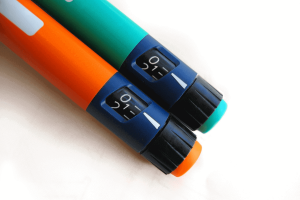
Break Bad Diabetes Habits
We’ve all been there. One postponed doctor appointment here, an unchanged lancet there. Because diabetes is such a time-consuming condition, it can be easy to take a few shortcuts in your care plan. Unfortunately, these seemingly helpful time-savers can develop into bad habits–ones that make managing your diabetes more difficult in the long run. In this blog post, we are going to show you how to break bad diabetes habits that you may or may not have noticed in yourself. Though it may take a little longer than 21 days to totally change, there’s no reason you can’t start now!
Bad habit #1: You put off doctor appointments
Why it’s bad: No one likes going to the doctor and trying to schedule a time for an appointment often seems like more trouble than it’s worth. However, skipping or postponing your checkups means you’re missing out on crucial tests, such as an A1C measurement and foot exams.
How you can change: The American Diabetes Association recommends people with diabetes see their doctor at least twice a year, though people who are newly diagnosed may benefit from a checkup once every three months. Talk to your doctor to find out what kind of schedule is right for you. It may be helpful to them to enter the dates in your calendar so you have reminders on when you need to schedule your appointments and have your schedule ahead of time! At Iowa Diabetes Care we offer convenient ways for you to be seen as well. Check us out.
Bad habit #2: You can’t remember the last time you changed your lancet
Why it’s bad: Blood glucose testing has come a long way in the last few years. Most lancets are so small and efficient that they can be used more than once. While it may seem faster and cheaper to reuse the same one week after week, your lancet will eventually become dull, germy, and less effective.
How you can change: While the jury is still out on exactly how often you should change your lancet, doctors recommend using a new one either every day or every time you test. You can remind yourself to do so by setting a reminder in your phone or marking the lancet every time you have used it.
Bad habit #3: You don’t use or forget to use a blood sugar log
Why it’s bad: Monitoring your blood sugar is one of the most important ways you can keep your diabetes under control and prevent complications. Dangerously low glucose levels can lead to fainting and insulin shock, while blood sugar that is too high for too long can result in kidney failure, heart disease, and nerve damage. By keeping a blood sugar log, you’ll be able to notice patterns in your sugars that help you prevent extreme highs and lows. An up-to-date logbook can also help your doctor provide better treatment at your next diabetes checkup.
How you can change: Start keeping track of your blood sugars every time you test. Not a fan of a pencil and paper? Try the mySugars log at Iowa Diabetes Portal. There, you can enter your sugars at your computer or on the go with your tablet or smartphone.
Bad habit #4: You estimate too much when counting carbs
Why it’s bad: Think there are only 20 carbs in that slice of pizza? Think again. Even carb-counting whizzes are guilty of under-or overestimating the number of carbohydrates in a meal. If your numbers are off by too much, you’ll likely suffer the consequence of high or low blood sugar after you eat.
How you can change: For the most accurate carb measurement, read the nutrition labels on your food before you chow down. If you’re eating out, read up on a dish’s carb count before you go. Many restaurants offer a nutritional breakdown of the entire menu online. Check out some of our favorite healthy recipes here! These recipes will surely help you break your other bad diabetes habits as well.
Bad habit #5: You don’t make time for exercise
Why it’s bad: According to the American Diabetes Association, regular exercise can help you manage your blood sugar, burn fat, build muscle, reduce stress, and sleep better. Being sedentary, or staying on the couch, is linked to obesity, heart disease, and even cancer.
How you can change: Start small. Begin by setting an attainable goal for yourself such as walking during your lunch break every day or going to the park instead of watching TV after dinner. All it takes is 30 minutes, five days a week to see benefits.
Bad habit #6: You skimp on sleep
Why it’s bad: When you aren’t getting enough zzzs, it’s harder for your body to break down glucose. This makes managing your diabetes much more difficult. In addition, sleep deprivation can lead to cravings and an increased appetite, making it harder for you to turn down fatty and sugary snacks.
How you can change: The National Sleep Foundation recommends adults get at least 7 to 8 hours of sleep each night. If you’re clocking in fewer, it may be time to rethink your schedule. Try not using your phone before you go to bed, so it’s easier to fall asleep, or setting a bedtime for yourself so you know you’ll be getting the right amount of sleep. If you have difficulty falling or staying asleep, talk to your doctor for help.
Summary
Bad habits can be easy to pick up. However, making smaller changes in your daily routine can have a much larger impact and positively impact your diabetes. Think about ways you can break your bad diabetes habits!
Disclaimer Statement: This is for educational purposes only and not intended as medical advice. For individual medical advice, contact your healthcare practitioner.




